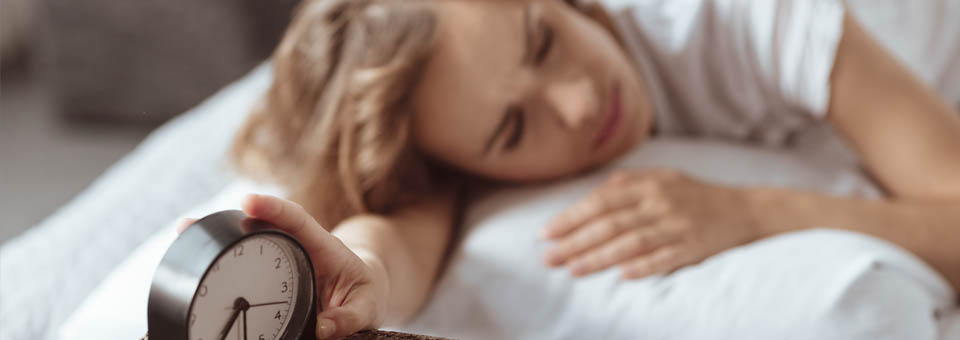The link between low melatonin and Type 2 diabetes is clearer than ever.
There are melatonin receptors on the pancreatic islet cells that generate insulin — a clear sign your pancreas needs melatonin for daily functioning. In the pancreas, melatonin eliminates free radicals, protects insulin function, and regulates blood glucose.
Most doctors won’t tell you this… but there are effective, natural alternatives for treating and even reversing diabetes that don’t come with unwanted side effects.
Melatonin is a great example, and today I’ll show you exciting new research along with the best food options for managing both melatonin and blood sugar.
Low Melatonin DOUBLES Your Diabetes Risk
A new study adds further evidence that low melatonin contributes to Type 2 diabetes.
Researchers wanted to know whether low melatonin levels increased diabetic patients’ risk of diabetic retinopathy, a diabetes complication that causes blindness.
Their research showed diabetics suffering vision problems have 40% less melatonin than diabetics with good eyesight.1
Other studies show:
- U.S. women with low melatonin are 2.2 times more likely to develop Type 2 diabetes.2
- Night-time melatonin production is “significantly lower” among diabetics, a clear sign of dysfunction.3
- Long-term melatonin supplementation improves blood-sugar markers.4
5 Food Sources for Natural Melatonin —
Plus the ONE Thing You Must Do for Help Sleeping
Here are several melatonin food sources that will help protect you from blood sugar problems.
Eggs and fish – Eggs and fish are your best animal sources. Salmon and sardines are also packed with healthy omega-3 fatty acids so you’ll get a double benefit.
Tart cherries – A 2012 study in the European Journal of Nutrition showed tart cherry juice “significantly” boosted levels of melatonin in the blood.5 No wonder people drink it to help them sleep.
Pineapple juice – This delicious tropical fruit is a melatonin powerhouse
. Researchers in Thailand discovered melatonin rose a whopping 255% after subjects drank pineapple juice.6 By the way, for a little extra sugar-busting power, spice things up by sprinkling in true cinnamon collected from the inner bark of trees from the genus Cinnamomum. Studies show it can reduce blood sugar by nearly 30%.7Pistachios – Studies show pistachios are a bountiful source of melatonin.8,9 Other seeds high in melatonin include fenugreek, sunflower, fennel, and flax.
In addition to stocking up on melatonin-rich foods, I recommend you keep light pollution from seeping into your bedroom.
Melatonin production rises at night and peaks around 3 a.m. Light exposure can disrupt this, however, by confusing your body’s internal clock. Some of my patients even use blackout curtains to block external light.
Aside from using melatonin for blood sugar support, you can also use it to help you sleep. But the melatonin pills most doctors recommend aren’t very effective… only about 10-15 percent reaches your circulatory system. An oral spray at a dose under 3 mg is faster acting and more effective.
To Your Good Health,
![]()
Al Sears, MD, CNS
References:
1. Wan, W.-C., Long, Y., Wan, W.-W., Liu, H.-Z., Zhang, H.-H., & Zhu, W. (2021). Plasma melatonin levels in patients with diabetic retinopathy secondary to type 2 diabetes. World Journal of Diabetes, 12(2), 138–148.
2. Gordon, S. (2012, April 2). Study Suggests Link Between Hormone Melatonin and Type 2 Diabetes. Retrieved May 4, 2021, from WebMD website.
3. Hikichi, T., Tateda, N., & Miura, T. (2011). Alteration of melatonin secretion in patients with type 2 diabetes and proliferative diabetic retinopathy. Clinical Ophthalmology (Auckland, N.Z.), 5, 655–660.
4. Zisapel, N., Garfinkel, Zorin, Wainstein, J., Matas, & Zisapel, N. (2011). Efficacy and safety of prolonged-release melatonin in insomnia patients with diabetes: a randomized, double-blind, crossover study. Diabetes, Metabolic Syndrome and Obesity: Targets and Therapy, 307.
5. Howatson, G., Bell, P. G., Tallent, J., Middleton, B., McHugh, M. P., & Ellis, J. (2011). Effect of tart cherry juice (Prunus cerasus) on melatonin levels and enhanced sleep quality. European Journal of Nutrition, 51(8), 909–916.
6. Sae-Teaw, M., Johns, J., Johns, N. P., & Subongkot, S. (2013). Serum melatonin levels and antioxidant capacities after consumption of pineapple, orange, or banana by healthy male volunteers. Journal of Pineal Research, 55(1), 58–64.
7. Khan, A., Safdar, M., Ali Khan, M. M., Khattak, K. N., & Anderson, R. A. (2003). Cinnamon Improves Glucose and Lipids of People With Type 2 Diabetes. Diabetes Care, 26(12), 3215–3218.
8. Meng, X., Li, Y., Li, S., Zhou, Y., Gan, R.-Y., Xu, D.-P., & Li, H.-B. (2017). Dietary Sources and Bioactivities of Melatonin. Nutrients, 9(4), 367.
9. American Pistachio Growers (2019, August 9). Study Finds American Grown Pistachios Contain Melatonin. Retrieved May 5, 2021.

